Abstract
In recent years, researchers and policymakers have used data from large-scale surveys of physicians to address important issues. A review of several of these surveys explores potential problems in this method of gathering data on physicians' services. To obtain a better grasp of the limitations such problems may pose, we examine several recent surveys, comparing response rates and survey findings, and in one survey the reliability of individual items. Response rates appear highly sensitive to differences in the approaches made to respondents and their perceptions of the goals of individual investigations. Reliability of survey items seems to depend on the specificity of information requested. Variation in the findings from different surveys may occur for many reasons, but is most likely to be found in response to items whose presentation differs in each survey's research instrument. Data from these surveys appear clearly useful for some important purposes. The large-scale medical practice survey seems particularly valuable in generating an understanding of differences among specialties in resources used in the delivery of care. Nevertheless, researchers and policymakers must understand the steps necessary to obtain reliable results and possible limitations in the accuracy of findings to make the best use of survey methodology as applied to medical practice.
Full text
PDF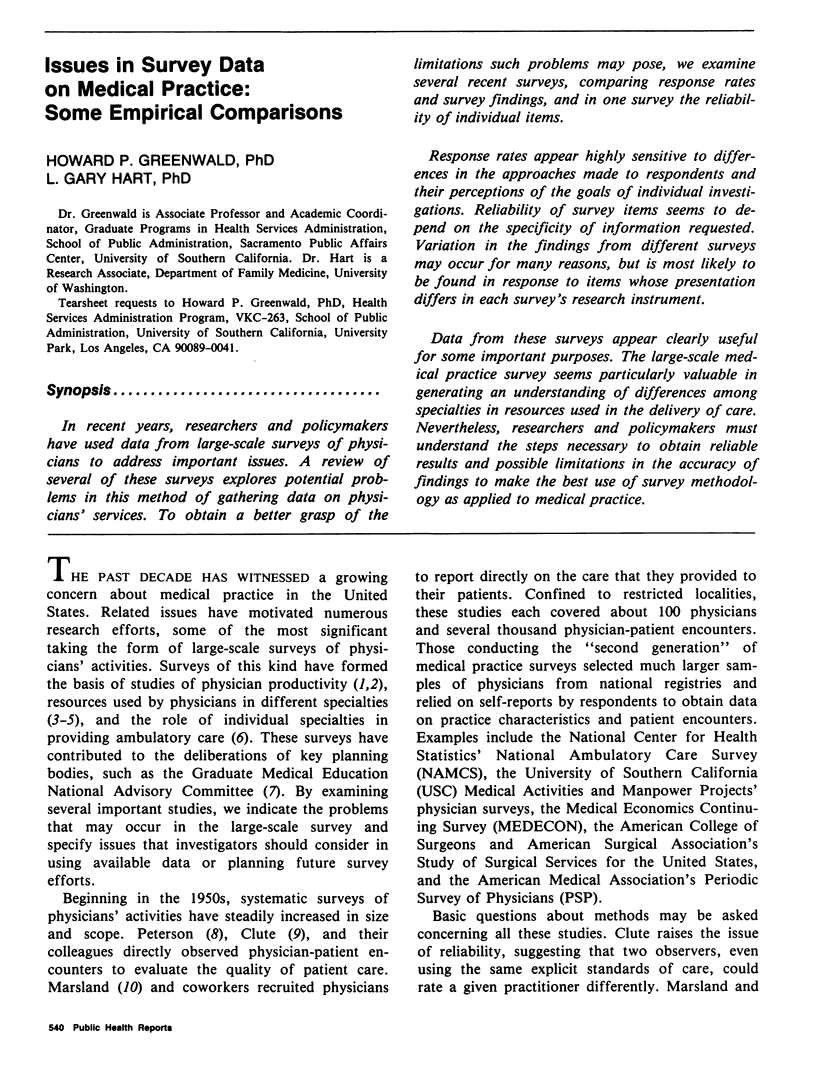
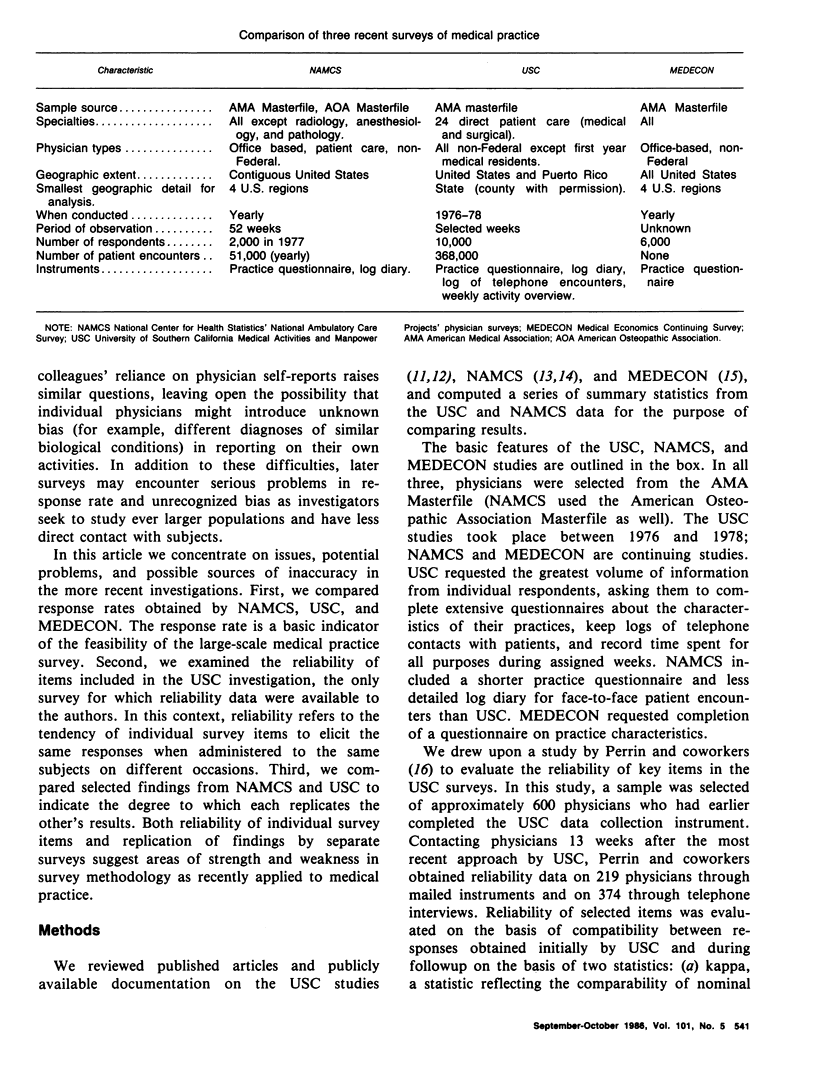
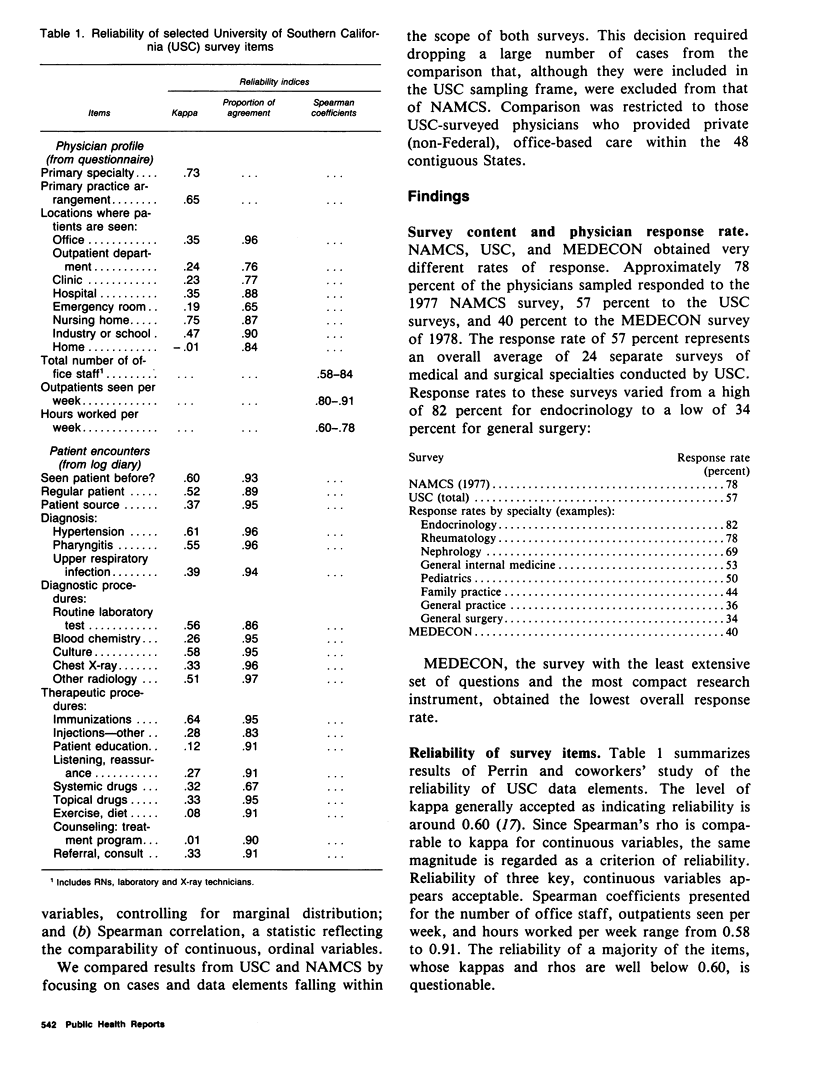
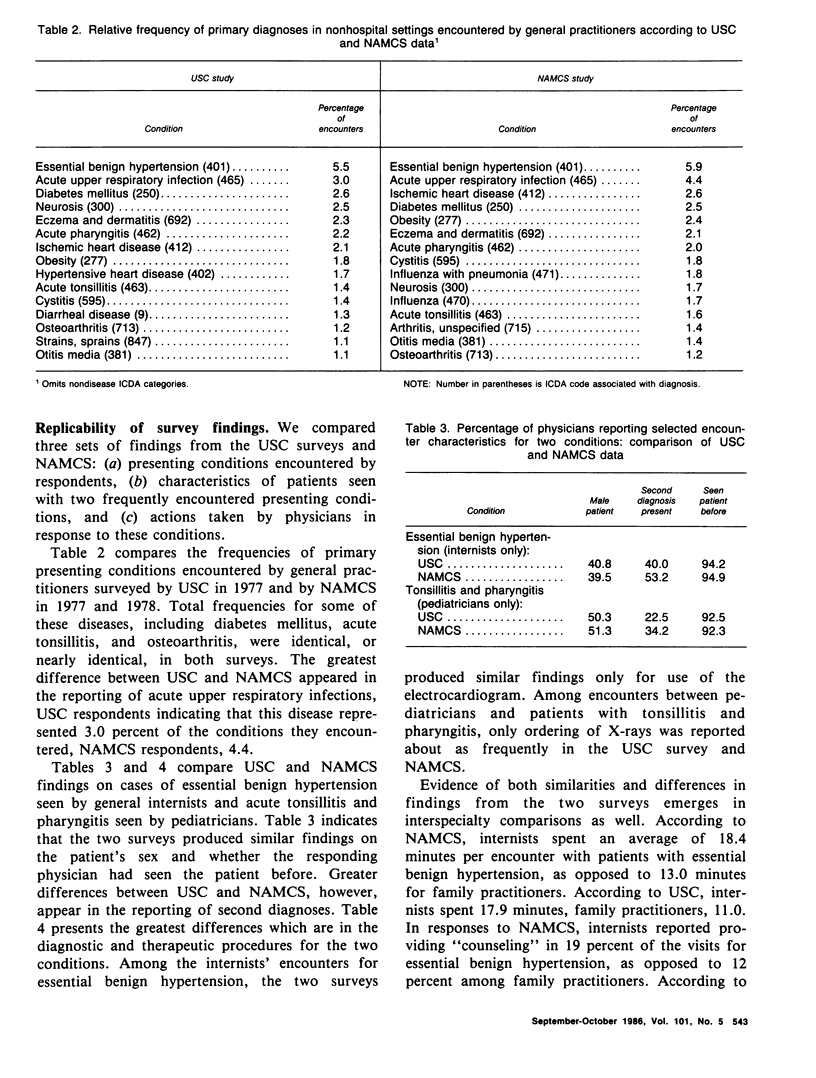
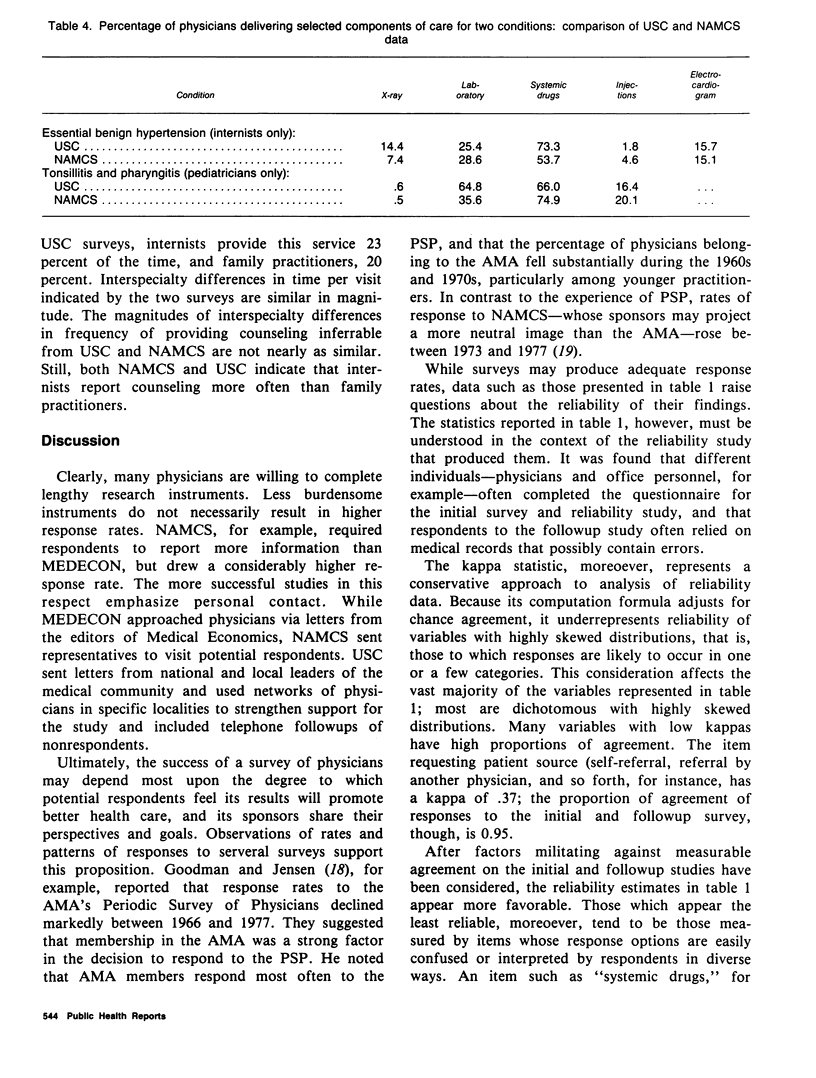
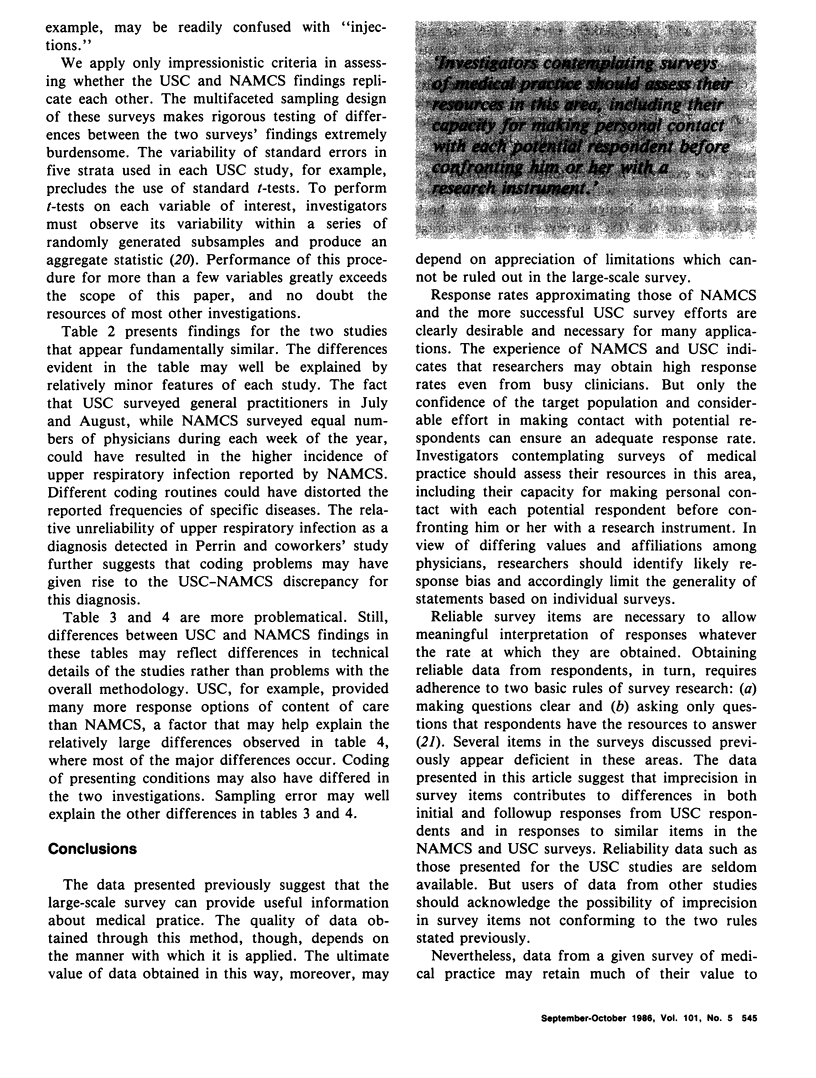
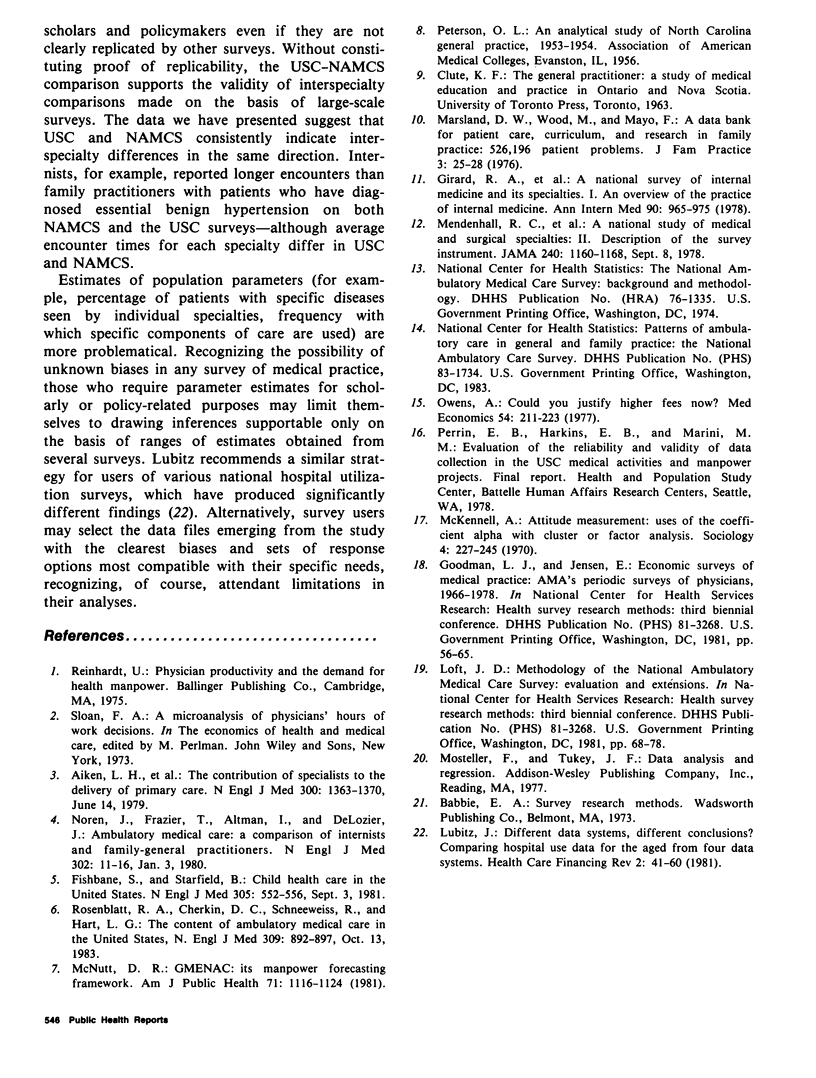
Selected References
These references are in PubMed. This may not be the complete list of references from this article.
- Aiken L. H., Lewis C. E., Craig J., Mendenhall R. C., Blendon R. J., Rogers D. E. The contribution of specialists to the delivery of primary care. N Engl J Med. 1979 Jun 14;300(24):1363–1370. doi: 10.1056/NEJM197906143002404. [DOI] [PubMed] [Google Scholar]
- Fishbane M., Starfield B. Child health care in the United States: a comparison of pediatricians and general practitioners. N Engl J Med. 1981 Sep 3;305(10):552–556. doi: 10.1056/NEJM198109033051004. [DOI] [PubMed] [Google Scholar]
- Girard R. A., Mendenhall R. C., Tarlov A. R., Radecki S. E., Abrahamson S. A national study of internal medicine and its specialties: I. An overview of the practice of internal medicine. Ann Intern Med. 1979 Jun;90(6):965–975. doi: 10.7326/0003-4819-90-6-965. [DOI] [PubMed] [Google Scholar]
- Lubitz J. Different data systems, different conclusions? Comparing hospital use data for the aged from four data systems. Health Care Financ Rev. 1981 Spring;2(4):41–60. [PMC free article] [PubMed] [Google Scholar]
- Marsland D. W., Wood M., Mayo F. A data bank for patient care, curriculum, and research in family practice: 526,196 patient problems. J Fam Pract. 1976 Feb;3(1):25–28. [PubMed] [Google Scholar]
- McNutt D. R. GMENAC: its manpower forecasting framework. Am J Public Health. 1981 Oct;71(10):1116–1124. doi: 10.2105/ajph.71.10.1116. [DOI] [PMC free article] [PubMed] [Google Scholar]
- Mendenhall R. C., Lloyd J. S., Repicky P. A., Monson J. R., Girard R. A., Abrahamson S. A national study of medical and surgical specialties. II. Description of the survey instrument. JAMA. 1978 Sep 8;240(11):1160–1168. [PubMed] [Google Scholar]
- Noren J., Frazier T., Altman I., DeLozier J. Ambulatory medical care: a comparison of internists and family-general practitioners. N Engl J Med. 1980 Jan 3;302(1):11–16. doi: 10.1056/NEJM198001033020103. [DOI] [PubMed] [Google Scholar]
- Rosenblatt R. A., Cherkin D. C., Schneeweiss R., Hart L. G. The content of ambulatory medical care in the United States. An interspecialty comparison. N Engl J Med. 1983 Oct 13;309(15):892–897. doi: 10.1056/NEJM198310133091505. [DOI] [PubMed] [Google Scholar]


